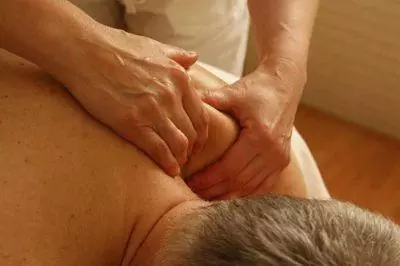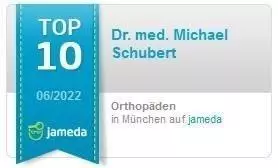Pain therapy for herniated discs
What are herniated discs?
The intervertebral discs are located between the individual vertebrae of the spine. They absorb shock and are responsible for the mobility of the spine. In the case of a herniated disc, parts of the disc are pushed outwards, i.e. towards the spinal canal where the nerves run.
This causes pain, which manifests itself as pure back pain or sometimes as leg pain.
What are the most common causes of herniated discs?
Colloquially, herniated discs are not quite correctly referred to as lumbago. A herniated disc does not always cause symptoms. Back pain, sensory disturbances and even paralysis are often triggered by herniated discs. The cause lies in long-standing previous damage to the intervertebral disc. Years of wear and tear from heavy physical work and poor posture can lead to a herniated disc.
Being overweight is also bad for the intervertebral discs. In sports such as squash, tennis or mountain biking, the spine is shaken or suddenly twisted. This in turn promotes herniated discs.
What pain therapy options are there for a herniated disc?
Pain-relieving and anti-inflammatory drugs are prescribed for pain therapy. If tablets and ointments do not help, syringes can be injected near the spine. The analgesic and anti-inflammatory agents thus reach the painful nerve root directly.
Facet joint blockade is a pain therapy. It is used when the vertebral joints are worn. Drugs are injected directly into the joint or onto the joint capsule. If the cause of the pain is irritation or swelling of the nerve root, a nerve root block can help. Under local anesthesia, an injection of cortisone is given directly to the affected nerve root.
A novel pain therapy for patients with chronic back pain is neurostimulation. If no therapy has helped, pain relief or even freedom from pain can be achieved with neurostimulation. The neurostimulator works in a similar way to a pacemaker. It directs an electrical impulse to a probe placed directly at the point of pain.
What special pain therapy was developed by the Apex-Spine Clinic (Dr. Schubert)?
In our spinal center apex spine, a new and safe endoscopic surgical method as well as catheter therapy has been developed. For the treatment of less severe herniated discs, the experienced team around the internationally renowned spine specialist Dr. Schubert on the specially developed safe catheter therapy. It is the further development of a pain therapy from the USA.
With our minimally invasive procedure, we alleviate even the most stubborn complaints. The therapy is given by Dr. Schubert has been used since 2001. It is used very successfully, especially for smaller herniated discs with severe leg or back pain. Scars caused by an intervertebral disc operation can also be dissolved with it.
What advantages does this therapy have over other methods?
Both the endoscopic surgical method and the safe catheter therapy make a large number of classic open intervertebral disc operations superfluous. Only a very small stab incision is required for this procedure. The risk of scarring is very small and practically non-existent. This procedure is less stressful and the healing process is shorter than with conventional procedures.
Advantages of our endoscopic disc surgery
- highest success rate
- no general anesthesia
- Immediate freedom from pain after the operation
- Vertebral ligaments and vertebral joints remain intact
- short skin incision of only 5 mm
- slight scarring in the area of the nerve root
- able to work after 1 to 2 weeks
- short hospital stay
Your special clinic: the Apex-Spine spinal column center
Get more quality of life with minimal intervention! Our apex (advanced percutaneous endoscopic access) method was developed by Dr. Schubert developed. He is considered the world's leading and most experienced spine surgeon. With us, you benefit from experienced specialists and the most gentle disc surgery in the world.
With our method, a long hospital stay is not necessary. Simply come to our specialist clinic at the Apex-Spine Spine Center for a consultation.

